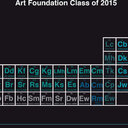Diminished basal phosphorylation level of phospholamban in the postinfarction remodeled rat ventricle: role of beta-adrenergic pathway, G(i) protein, phosphodiesterase, and phosphatases.
Ключові слова
Анотація
Three weeks after myocardial infarction (MI) in the rat, remodeled hypertrophy of noninfarcted myocardium is at its maximum and the heart is in a compensated stage with no evidence of heart failure. Our hemodynamic measurements at this stage showed a slight but insignificant decrease of +dP/dt but a significantly higher left ventricular end-diastolic pressure. To investigate the basis of the diastolic dysfunction, we explored possible defects in the beta-adrenergic receptor-G(s/i) protein-adenylyl cyclase-cAMP-protein kinase A-phosphatase pathway, as well as molecular or functional alterations of sarcoplasmic reticulum Ca(2+)-ATPase and phospholamban (PLB). We found no significant difference in both mRNA and protein levels of sarcoplasmic reticulum Ca(2+)-ATPase and PLB in post-MI left ventricle compared with control. However, the basal levels of both the protein kinase A-phosphorylated site (Ser16) of PLB (p16-PLB) and the calcium/calmodulin-dependent protein kinase-phosphorylated site (Thr17) of PLB (p17-PLB) were decreased by 76% and 51% in post-MI myocytes (P<0.05), respectively. No change was found in the beta-adrenoceptor density, G(salpha) protein level, or adenylyl cyclase activity. Inhibition of phosphodiesterase and G(i) protein by Ro-20-1724 and pertussis toxin, respectively, did not correct the decreased p16-PLB or p17-PLB levels. Stimulation of beta-adrenoceptor or adenylyl cyclase increased both p16-PLB and p17-PLB in post-MI myocytes to the same levels as in sham myocytes, suggesting that decreased p16-PLB and p17-PLB in post-MI myocytes is not due to a decrease in the generation of p16-PLB or p17-PLB. We found that type 1 phosphatase activity was increased by 32% (P<0.05) with no change in phosphatase 2A activity. Okadaic acid, a protein phosphatase inhibitor, significantly increased p16-PLB and p17-PLB levels in post-MI myocytes and partially corrected the prolonged relaxation of the [Ca(2+)](i) transient. In summary, prolonged relaxation of post-MI remodeled myocardium could be explained, in part, by altered basal levels of p16-PLB and p17-PLB caused by increased protein phosphatase 1 activity.


